
Why Doesn't My Retainer Fit Anymore?
After completing orthodontic treatment like braces or clear aligners to straighten your teeth, there's still more to your journey. Your teeth need some persuasion to keep from shifting back to their pre-alignment positions. You'll have to wear a retainer for the foreseeable future to keep your teeth in their new, straighter places.
But let's be honest — it can be easy to forget to wear your retainer or only take your orthodontist's instructions half-seriously. Maybe you recently found your retainer and are wondering why it feels strange. Perhaps something else happened that is leading to a poor fit. Whatever the reason, continue reading to discover why your retainer no longer fits and what you should do about it.
Reasons Your Retainer No Longer Fits
Here are some of the most prevalent reasons your retainer may have an improper fit.
- You haven't worn it as advised: Your orthodontist gave you detailed instructions about how and when to wear your retainer when you finished your alignment treatment. If you failed to meet these requirements, especially in the early stages, your retainer might stop fitting correctly.
- Your retainer became damaged: Retainers consist of thin plastic, and you should do all you can to keep them safe. Even a simple drop can lead to an improper fit. You should also be careful about subjecting your retainer to high heat, as this can melt the plastic. Also, be aware of crushing damage from keeping your retainer in your pocket, book bag or purse.
- Your bite has changed: Many people wonder — can you outgrow retainers? Your jaw changes its structure as you age, which can move your teeth around and change how they sit when you bite. Even if you wear your retainer as advised, it could still stop fitting after several years' worth of jaw and bite changes. Or maybe you got implants, crowns or other forms of dental work. These procedures can also change your bite and cause your retainer to lose its once-perfect fit.
Signs Your Retainer Doesn't Fit Anymore
If you're unsure if your retainer is fitting correctly, you may need to learn more about the signs of an improper fit. Here's what you could experience if your retainer doesn't fit anymore.
- A loose fit: If you try to put your retainer in and it feels loose or falls out, the retainer may have served its time.
- Having to force the retainer on: Use extreme caution when putting on a retainer after months or years of forgetting to wear it. If you have to use force to get your retainer to fit over your teeth, you should immediately stop trying to put it on. We'll talk more about the risks of wearing an old or damaged retainer in the next section. For now, know that having to force your retainer on is a sign that it no longer fits.
- Tooth pain: You may be able to put your retainer on, but the results could be less than pleasant. If your retainer hurts your teeth after you insert it, take it out and see if the pain goes away. Your retainer may not fit anymore, and trying to wear a retainer with the wrong fit can be painful. A poor fit could be the quickest answer to why your retainer hurts when you wear it.
- Headaches: Unwanted pressure from a poor-fitting retainer can lead to headaches. Getting frequent headaches, migraines or increased pressure in your head after putting in your retainer could signify it doesn't fit anymore.
Risks of Wearing an Old or Damaged Retainer
Now that you know some of the signs that your retainer no longer fits, you should know about the risks of wearing an old or damaged retainer. Some of the red flags in the previous section seem like risks unto themselves. For instance, headaches and tooth pain are both unpleasant experiences you should avoid at all costs. Here are some of the other dangers of trying to wear an old or damaged retainer.
- Cracked or chipped teeth: Trying to force on a tight retainer can be a dangerous gamble. Push too hard, and the force of the pressure can cause some of your teeth to crack or chip. Then, you'll have a much bigger issue on your hands than an old retainer. Fixing cracked or chipped teeth can be expensive, so always be sure to avoid forcing on a retainer that feels too tight.
- Shifting teeth: Damage caused by high heat or pressure can make your retainer change its shape and put undue force on your teeth, causing them to move. And if your teeth have naturally shifted, wearing your old retainer can add pressure, making them loose and more susceptible to unwanted shifting. Both of these types of movement could cause severe problems and nullify the hard work and money you spent on getting your teeth straightened in the first place.
What to Do If Your Retainer Doesn't Fit Anymore
To avoid the risks above, you need to take specific actions if your retainer doesn't fit anymore. How often should you replace a retainer? Can you wear an old retainer? The simple truth is that the risks to your teeth and your well-being from wearing an ill-fitting retainer can be too severe. Instead, follow the steps below so you can stay safe and keep your smile healthy and happy.
- Contact your orthodontist: Reach out to your orthodontist right away. Tell them what you're experiencing with your retainer, whether it's tight, loose or causing you pain. Be honest, though. Their first question to you may be if you've been wearing your retainer as directed since they last saw you.
- Receive your new retainer: In the most severe circumstances, your orthodontist may suggest you wear braces again to correct the shifting of your teeth. But, if you've only experienced minor shifting, your orthodontist may recommend you get a new retainer to keep your teeth in their current positions. Your orthodontist will take another mold of your teeth, and soon you'll have your new retainer.
- Wear your new retainer as directed: Follow your dentist's instructions for wearing your new retainer. Think of this as a fresh opportunity to do things right. Failing to do so can put you back at square one.
- Take care of your retainer: Once you get your new retainer, you need to take care of it. Retainer maintenance includes keeping it safe and cleaning it daily. One way you can make cleaning your retainer easier is with WhiteFoam from EverSmile. WhiteFoam is a wearable, clear retainer cleaner that even whitens your teeth and freshens your breath. Pump the WhiteFoam into your clear retainer, insert it over your teeth and let the WhiteFoam do the rest. For a more portable option, try EverSmile's AlignerFresh for on-the-go retainer cleaning.
Practice Good Oral Hygiene With the Help of EverSmile Products
Getting a new retainer is a perfect time to start taking your oral hygiene more seriously. Here at EverSmile, we know taking care of aligner and retainer trays can be a hassle. That's why we designed our full line of products to simplify your oral hygiene routine. Whatever your dental needs may be, we have the oral hygiene product for you.
Contact us online today for more information on how we can help take your oral hygiene to the next level. Today's the day to start taking better care of your retainer. We look forward to helping you reach your dental goals!
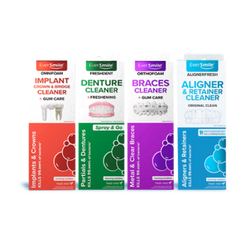
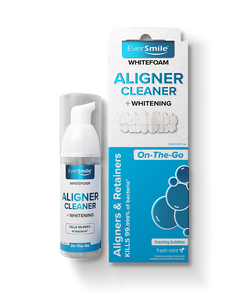
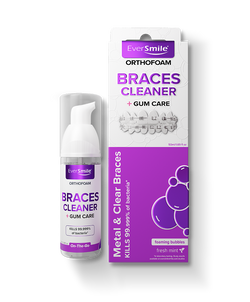
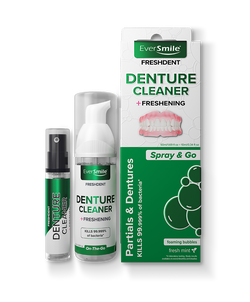

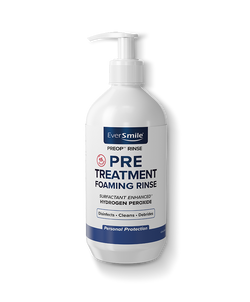



Post a Comment!